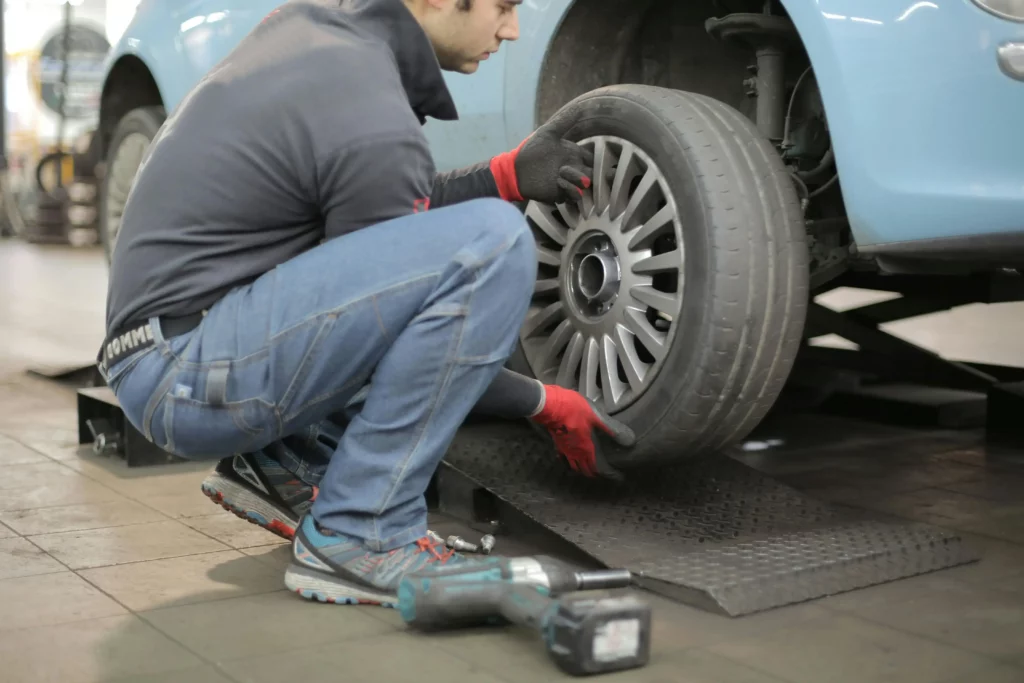Car wheel alignment involves adjusting the suspension of your vehicle and wheels from different angles to ensure that your tyres are making contact with the road from the right angle. This reduces damage, and increases tyre lifespan and road safety, so it’s important to understand everything about this process.
This blog post will explain all things wheel alignment, including what it is, the signs of incorrect alignment, and whether you need an alignment.
Is car wheel alignment the same as ADAS calibration?
It is a common assumption that car wheel alignment is the same as, or simply a part of ADAS calibration. However, car wheel alignment is not the same as ADAS calibration and they are actually entirely different processes. However, both processes are related given that accurate wheel alignment is vital for perfectly functioning ADAS (advanced driver assistance systems).
ADAS calibration is the process of adjusting the sensors and cameras on a vehicle to ensure that they are perfectly calibrated and can detect obstacles accurately. Poor wheel alignment can lead to ADAS sensors misinterpreting the true position of your vehicle, which can lead to incorrect readings (and vice versa).
As a result of this, we would recommend that you always seek an ADAS calibration after a wheel alignment, especially if you find out that your wheels had to be amended drastically.
What is wheel alignment

Wheel alignment involves a mechanic adjusting the suspension and fitting of your wheels to amend the angles in which they are pointing. The aim of the process is to maximise the area of your tyre which is touching the surface of the road, and this is beneficial for a number of reasons:
- Decreased tyre wear – Misaligned wheels cause excess wear on some areas of your tyres, which means you have to get them replaced sooner.
- Improved handling – Correct alignment drastically increases stability and handling in your vehicle. Issues such as vehicle drift are often caused by poor alignment.
- Fuel efficiency – Wheel alignment problems can increase fuel usage due to your engine needing to overcompensate.
- Road safety – Regular wheel alignments reduce the risk of accidents which can be caused by problems such as drift or off-centered steering wheels.
Wheel alignment is performed primarily in relation to three different angles known as camber, toe, and caster.
Camber alignment refers to the angle of the wheels from a front-on view of the car, defined by whether they are tilted inward or outward. Wheels tilted inward are said to have negative camber, whereas those tilted outwards are positive camber.
Toe alignment is in relation to whether the wheels are parallel to each other, as viewed from above the vehicle. Toe in refers to when the tyres are facing inwards at the front, and toe out refers to tyres which are facing outwards from the front.
Finally, caster alignment refers to the tile of the steering axis, when viewed from the side of the vehicle. Negative caster means that the steering axis is tilted towards the front of the car, away from the driver. Positive caster refers to a car in which the steering axis is tilted towards the driver, away from the front of the car. The caster alignment of your car can impact stability and balance when steering.
Signs of incorrect alignment
You might be wondering: how do I know if my wheels aren’t correctly aligned? We’ve outlined a few of the main warning signs for wheel misalignment:
- Off-center steering wheel – If you’re driving straight, but your steering wheel isn’t centered, this is a good sign that your alignment is out.
- Squeaking tyres – If you notice loud squeaking/squealing noises from your tyres, particularly whilst turning, it might be because of alignment issues.
- Steering issues – Whilst there are a lot of factors which might be causing your steering issues, misalignment is one of the most likely. If you notice unresponsive steering, it’s recommended that you seek wheel alignment.
- Increased fuel consumption – If you’re going through a lot more fuel than usual, this might be due to misalignment. There are lots of other factors which can cause excess fuel consumption, but if you notice this alongside any of the other wheel alignment warning signs, it’s likely that.
- Vibrating steering wheel – On top of potentially having a misaligned steering wheel, you may also notice that your steering wheel is vibrating. This is more likely to occur at higher speeds.
Do I need a wheel alignment?
You need a wheel alignment if you notice one or more of the above signs such as an off-centered steering wheel, squeaking or squealing tyres, issues with steering, increased fuel consumption, or a vibrating steering wheel at high speeds. If you’re still not sure, you can always feel free to get in touch with us at Lancashire ADAS for more information.

